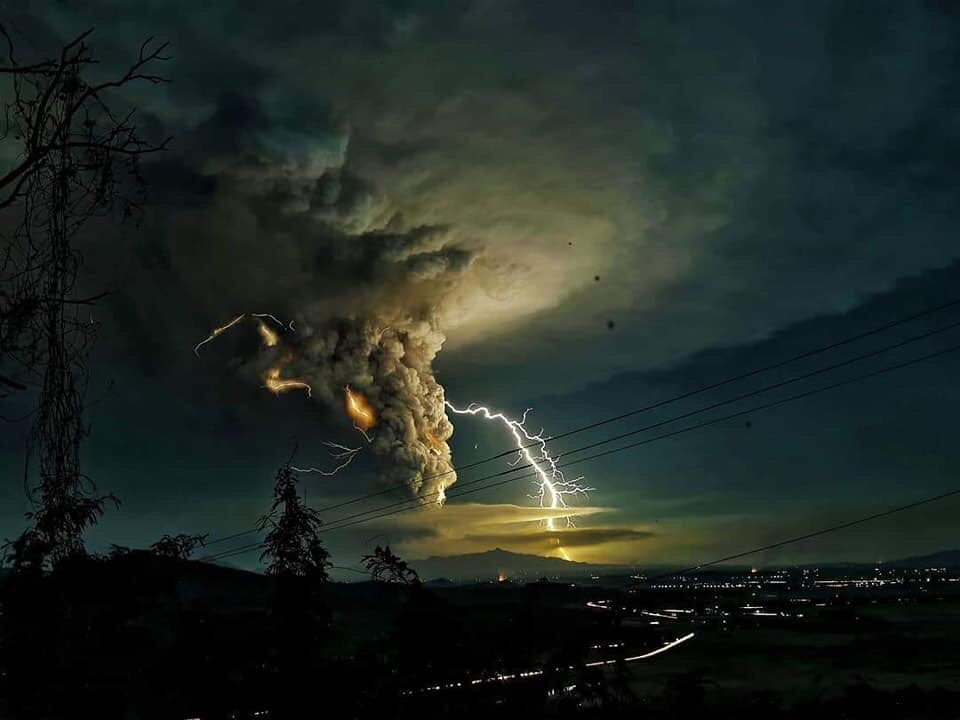
A continuous eruption from Philippines’ Taal volcano was observed on Sunday, 12 January 2020, at 5.30 pm (Singapore time). The powerful eruption sent an ash plume 10-15 kilometres (km) into the atmosphere and ashfall as far as Quezon city 65 km away, with volcanic lightning seen flickering continuously in the plume above the volcano. This prompted the Philippine Institute of Volcanology and Seismology (PHIVOLCS) to raise the alert level to Alert Level 4 (hazardous eruption imminent).
Alert Level 4 means that further eruptions are likely in the coming hours or days. The residents of Volcano Island, as well as communities within 14 km of the volcano, have been ordered to evacuate and people are advised to stay away from the volcano. Because the ash plume is currently drifting to the north of the volcano, communities in this region have also been advised to prepare for ashfall.

At 3.20 am on Monday 13 January 2020, PHIVOLCS updated that sulfurous smell and ash particles of up to 64 millimetres in diameter had affected several areas. At 8 am, they added that this eruption is accompanied by lava fountaining, thunder, lightning and seismic activity including more than 20 earthquakes felt by local populations. This intense seismic activity suggests that there is significant magma movement within the volcano and that further eruptive activities can be expected.

Taal volcano had seen an increase in seismic activity since 11 am on 12 January 2020. An increase in surface activity from 1 pm prompted PHIVOLCS to raise the alert level from 1 (abnormal) to 2 (increasing unrest). At 2.04 pm, PHIVOLCS reported that the volcanic plume had reached 1 km in height. PHIVOLCS proceeded then to raise the alert level to 3 (magmatic unrest), and the authorities evacuated three local towns and put all local flights on hold.
Taal volcano is the Philippines’ second-most active volcano. It is located on the island of Luzon, about 65 km south of Manila. 35 eruptive periods have been reported during the Holocene period (the last 11,700 years of Earth’s history), with the last eruption in 1977. Taal volcano can produce large eruptions. At least four historical eruptions are classified as violent with a Volcanic Explosivity Index (VEI) between 3 and 5. They caused more than 1,500 fatalities and loss of livelihood and properties.
It is a broad caldera (almost half the size of Singapore) that was created from a series of eruptions and edifice collapses. Rising from Lake Taal, a lake that fills the caldera, is Volcano Island. This island is known to be historically volcanically active.

In the past few years, Taal volcano has been in a state of unrest, producing tens of earthquakes each day. Changes in the water level, temperature and acidity of its crater lake, and deformation of the volcanic edifice have also been recorded as part of its unrest.
For official updates on volcanic activity at Taal volcano, follow PHIVOLCS on Twitter @phivolcs_dost.
(Source of thumbnail photo: Domcar C. Lagto)